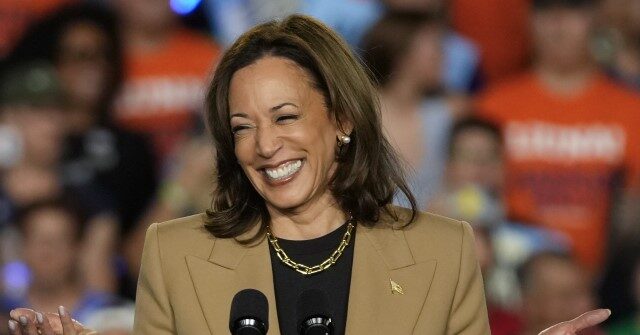As the 2024 presidential campaign heats up, Vice President Kamala Harris is leveraging Snapchat to engage young voters, largely succeeding in this endeavor due to the absence of former President Donald Trump on the platform. Following the events of January 6, 2021, Trump’s personal account was banned by Snapchat’s parent company, Snap, a decision that remains in effect and has prevented Trump from using the platform to connect with younger demographics. Despite his stated intention to attract younger voters, Trump’s campaign has opted out of Snapchat altogether, a move that hands a significant advantage to Harris as she has invested over $5.3 million in advertisements on the platform, while Trump has allocated no funds.
The ongoing feud between Trump and Snapchat’s management highlights a strategic misstep in Trump’s campaign approach. Snap’s refusal to reinstate Trump’s account, coupled with the company’s attempts to monetize through advertising without Trump’s participation, creates a unique political landscape. Even though Trump’s campaign is allowed to purchase ads—subject to fact-checking—it has chosen not to utilize the platform for advertising. This absence has left an open field for Harris to position herself as a forward-thinking candidate, appealing to the tech-savvy younger generation who predominantly engage with social media.
Harris’s campaign has artfully crafted its messaging on Snapchat to resonate with younger voters, using contemporary references and music to connect with them. For example, her advertising features Beyoncé’s “Freedom” as a campaign theme song and creatively incorporates messages framed as “back-to-school assignments.” Such strategies aim to make Harris relatable to Millennials and Gen Z, demographics that are crucial for electoral success in an election that is projected to be tightly contested. As both candidates intensify their outreach efforts, the focus on engaging younger voters has become a key priority, driven by the recognition of their increasing influence on election outcomes.
The significance of Snapchat as a tool for political engagement, especially among younger Americans, cannot be overstated. The platform boasts over 100 million U.S. users—80 percent of whom are aged 18 or older—making it an effective medium to reach eligible voters. It hosts a higher percentage of users under 30 compared to competing platforms, which emphasizes its potential as a pivotal space for campaigns looking to engage a younger audience. Digital strategists recognize that, while more substantial investments are directed toward platforms like Facebook and Google, Snapchat’s unique, more personal engagement style offers a valuable pathway to influence immediate social interactions among friends, thereby enhancing the likelihood of political discussions.
Snapchat may not be the sole focus for the candidates, but it holds a considerable role in their broader strategy to appeal to younger voters, who increasingly consume news and information through social media channels. As Harris continues to dominate on Snapchat, the platform serves as a manifestation of her progressive campaign narrative, contrasting sharply with Trump’s traditional, and now largely absent, media presence. If either candidate can effectively mobilize this demographic, it could spearhead a narrow victory in a pivotal election, making the battles over digital spaces between the two campaigns all the more significant.
In conclusion, as young voters become increasingly central to electoral strategies, the contrasting approaches seen in Harris’ and Trump’s campaigns exemplify how social media can inform political dynamics. With Harris actively using Snapchat to engage and influence young voters while Trump remains absent, the two candidates’ fates may hinge on their abilities to connect with this crucial demographic. The unfolding political narrative emphasizes the necessity for campaigns to adapt to the contemporary media landscape, where platforms like Snapchat have reshaped how candidates communicate with the electorate, particularly the younger generations they must capture to secure electoral victories.

